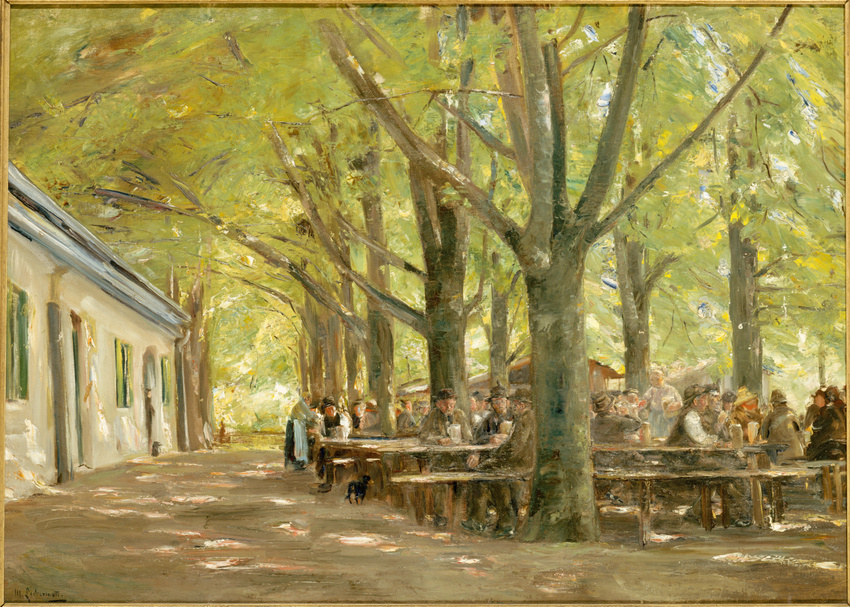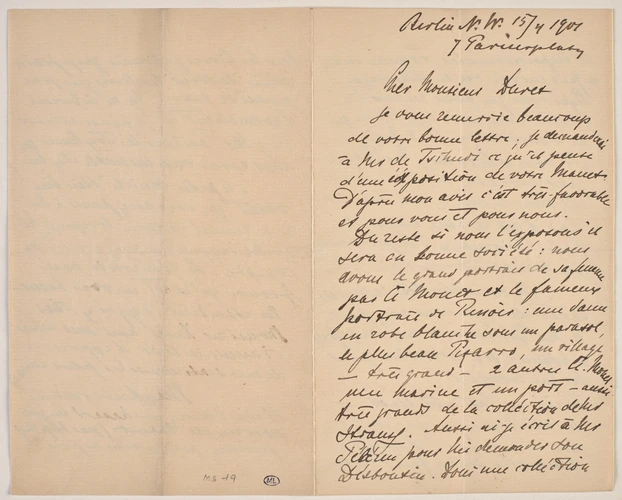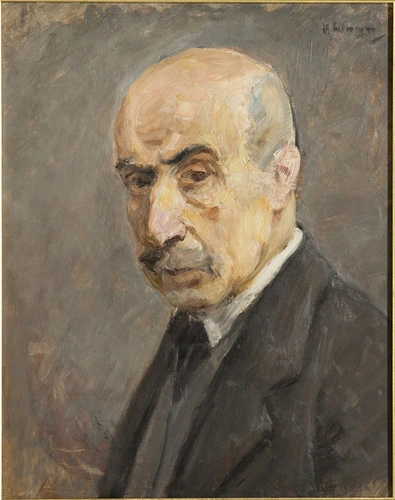Brasserie de campagne à Brannenbourg
During his visit to Italy in the spring of 1893, Liebermann stopped in Bavaria, very near to Brannenburg. There he found the tables of a pub set out in the shade of some tall trees, the subject of a number of his paintings. That same year, the young painter Erich Hancke, met Liebermann and discovered the still unfinished Country Pub in Brannenburg as well as the preparatory works for the painting, in particular a sketch in black chalk. Having decided to paint this motif, Liebermann "drew it again, in a larger format and in much more detail [...]. In its turn this drawing was transposed on to canvas using a grid". Astonished that such an unspontaneous method should have been used, so at odds with the look of the painting, Hancke was even more surprised when hearing the painter talk about the small figures in it: "First the shape must be there, he said, and then it has to be taken away".
In general, it is the space, punctuated by the rows of trees with sunlight filtering through, which is the constant subject in Liebermann's work. However, when this painting was done, this motif was never used in a pure landscape, but accompanied, like here, by a scene bristling with anecdotal details and movements. This characteristic places Liebermann's work in the same area as Menzel (1815-1905), who has a similar acute sense of observation and an ability to reproduce scenes of everyday life.



